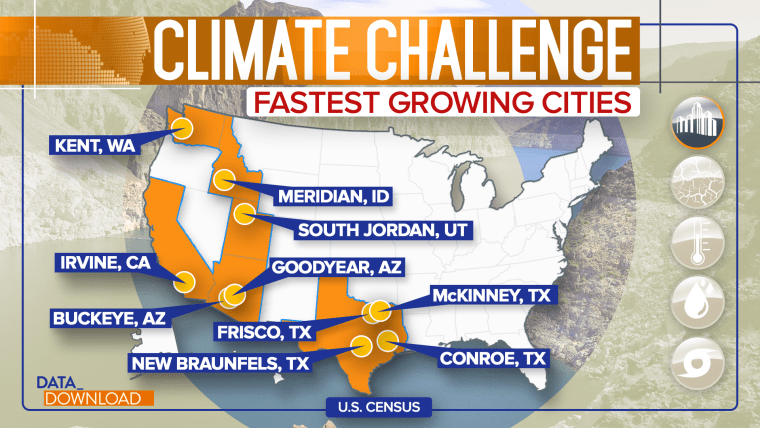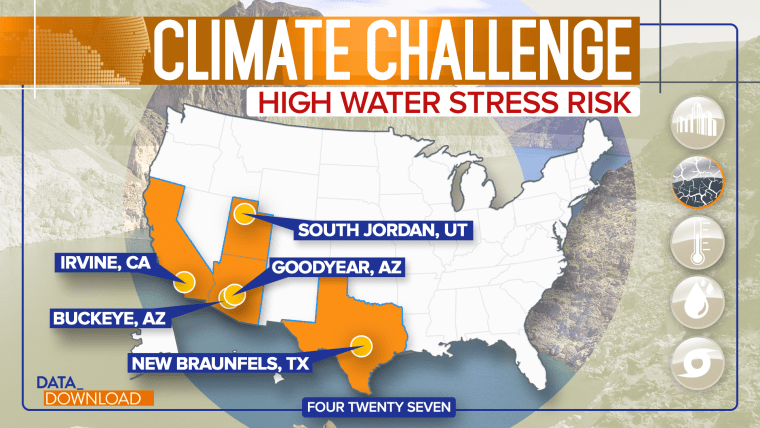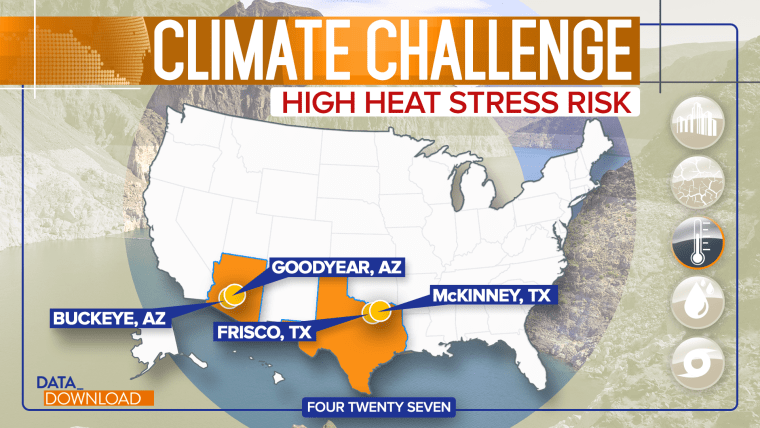WASHINGTON — The Southern and Western U.S. are still adding population, and all those new people are likely to have big environmental and political impacts.
While much of the 2020 census coverage has been about redistricting, the latest set of numbers also reveals broader stories about population growth patterns — the places and kinds of places that are adding people.
One big and familiar headline: The Sun Belt is still growing, continuing a shift that has been apparent since the late 20th century. All those new people are going to a region experiencing some dramatic climate changes. Even before Hurricane Ida last week, there were stories of increased heat, decreased rainfall and wildfires in the West and the Southwest, and if those tendencies continue, all those population shifts may make for serious challenges.
The 10 fastest-growing cities with more than 50,000 people give a sense of the story.

The data list four cities in Texas (Frisco, Conroe, New Braunfels and McKinney), two in Arizona (Buckeye and Goodyear) and one each in Idaho, Utah, Washington and California.
Each of the cities has grown by more than 44 percent since 2010, and all of them are satellites of larger urban areas, spillovers from communities that have been population magnets for decades — from Houston to Phoenix to Salt Lake City.
All of them are west of the Mississippi River, and seven of them are south of the 40th parallel, a traditional marker for the Mason-Dixon Line. The geography has specific environmental characteristics — and the climate forecast for those areas in the next few decades looks concerning.
The data analysis firm Four Twenty Seven, which measures the physical risks of climate change, last year released a 40-year projection of the risks of climate change down to the city level. A majority of the 10 fastest-growing cities were scored as "high risk" on a range of climate change factors; several scored high on multiple factors.
Consider the natural resource many analysts consider to be the next big concern: water. Half of the top 10 cities scored as having high risks for water stress in the next few decades by Four Twenty Seven.

Buckeye and Goodyear, in the Phoenix suburbs, are in the high-risk category. Irvine, near Los Angeles, and New Braunfels, near San Antonio, are also in the high-risk category.
The other top 10 growth city where water stress could be a challenge, South Jordan, Utah, scores even worse. The analysis puts it in the high-risk "red flag" category.
"Water stress" takes into account the likelihood of increased drought conditions, as well as stresses on demand. And if you had any doubts about the dangers of low availability of that vital resource already, last week offered evidence for concern.
Last month, the federal government issued the first water shortage warning for the Colorado River — the river that feeds Lake Mead — and water and power supplies for Arizona, California, Nevada and Utah.
The warning affected mainly farmers, but deeper reduction measures could affect cities like Las Vegas, Phoenix and Tucson, Arizona. That is the kind of climate news that voters notice.
One of the big factors behind the lower levels, along with drought, is a very hot summer. Denver is having its fourth-hottest summer ever. Phoenix set a record for its hottest June.
And the Four Twenty Seven data suggest that four of the 10 fastest-growing cities are set for hotter times.

Frisco and McKinney, near Dallas, are rated at high risk for heat stress. And near Phoenix, the same is true for Goodyear and Buckeye.
High risk for "heat stress" means those communities are primed for increases in temperature in ways that are likely to lead to higher energy costs, heightened risk of power outages and other impacts on health and the labor force.
Those are the kinds of changes with impacts that get voters' attention. They usually lead to increased utility bills or increased government spending.
There are other climate threats, as well, of course. Fast-growing Florida is at risk for more violent hurricanes, according to the analysis. And even as some areas face increased danger from drought, other growing states, such as Georgia, look as though they may be in line for more excessive rainfall.
For all the debate in Washington about climate change, there are signs that voters are already feeling some of the impacts. And the population changes in the latest set of census data suggest that those impacts — environmental and political — will only be worsened in the years ahead.
CORRECTION (Sept. 5, 2021, 7:20 p.m. ET): A previous version of this article misstated when the federal government issued its first-ever water shortage warning for the Colorado River. The warning was issued Aug. 16, not Aug. 30.